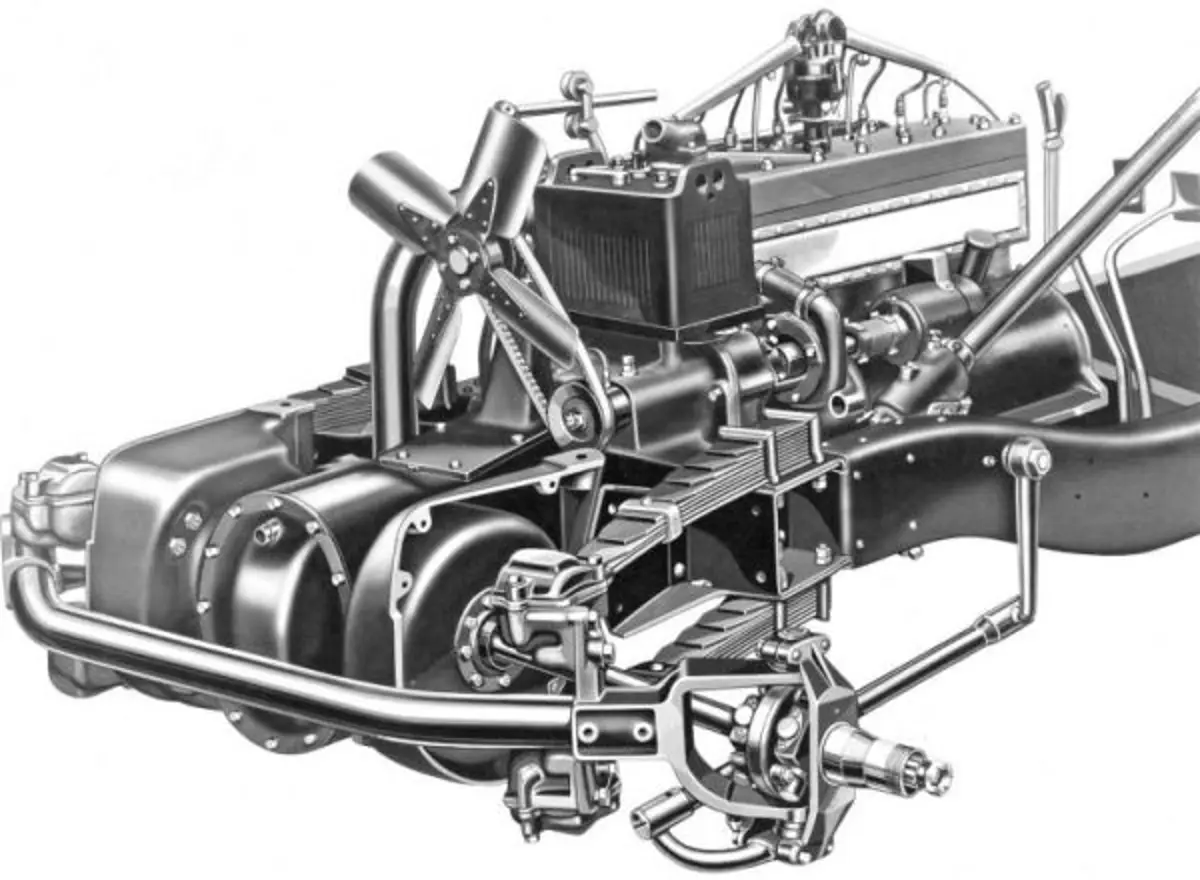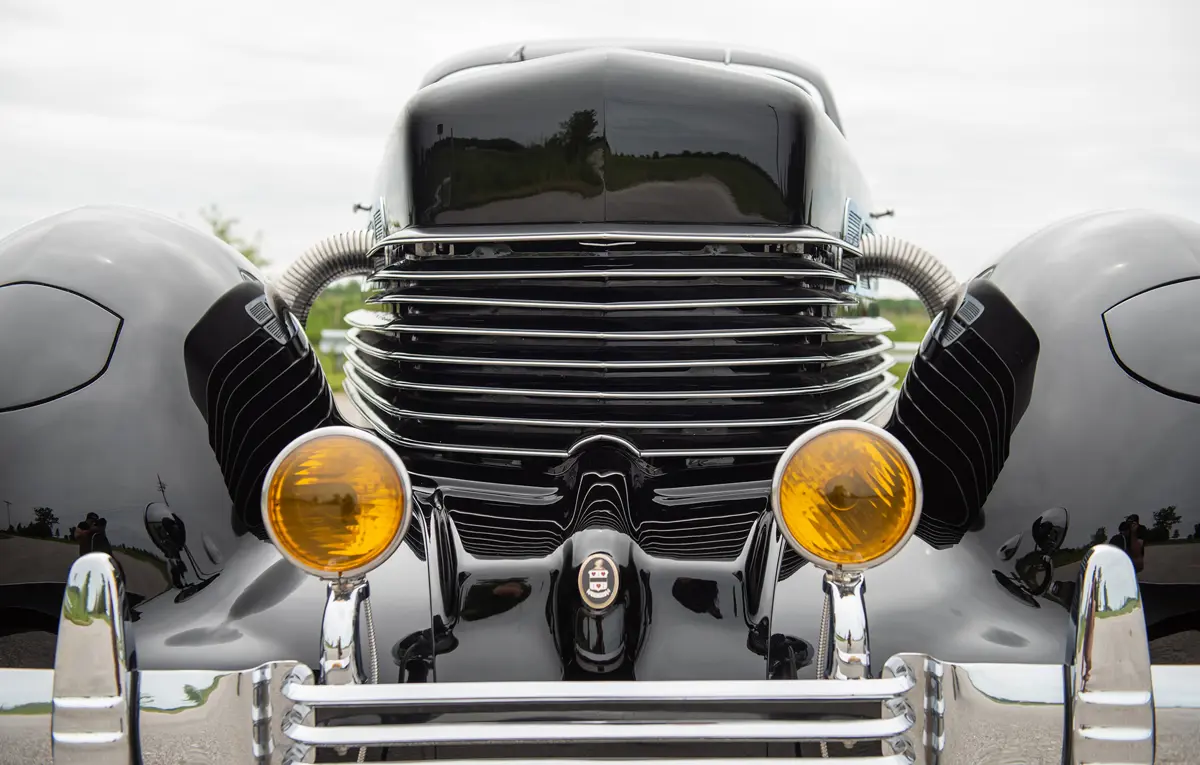Ahead of its time, the Auburn, Indiana-based Cord brand stood for cutting-edge American engineering. But there is such a thing as being too advanced. Introducing too many innovations in a new model, at least according to a contemporary article produced by the Ford Motor Company, only made potential buyers nervous. Coined today as the “innovation fulcrum,” this principle denotes how much a company can unveil at one time. Ford feared customers would praise such a car as revolutionary but not park them in their garage, believing the new features would fail and fade.
Apparently Gordon Buehrig and his design team did not get this memo, launching the Cord 810 with five ground-breaking features: front-wheel drive, CV joint drive axles, concealed headlights, a remote-shifting transmission, and wrap-around hood louvers. The automotive world swooned, but few Cord 810 or 812 models were ever made or sold. The few that remain continue to dazzle those who love great cars.
Astute American automobile aficionados will no doubt note that Cord had already unveiled front-wheel-drive in the L-29, first released in 1929. My first revelation of Cord’s mechanical innovation came to me as a college auto-tech student. I was rifling through my maternal grandfather’s auto mechanic textbook from the 1940s. Ernest Campbell had been a civilian contractor with the US Army Air Corps before and during World War II, experiencing the “Day of Infamy” on 7 December 1941. Being a mechanic, he was constantly educating himself in the latest technology. I still refer to his textbook and use his Snap-On tools, which I use to work on our family’s 1933 Auburn Phaeton.
I remember that moment I first studied the cutaway drawing of the Cord transmission found in the hardbound book. My first question was, “Which way does the transmission attach to the engine?” I was baffled as to how there could have been a front-wheel-drive car before the existence of our family’s Honda Accord. Forty percent of new cars in 2023 feature front-wheel drive, and it is amazing to think that the technology dates back a century. I knew of the Cord from my cursory reading of automobile history books but did not truly understand what made them so unique and revolutionary.
Another decade would pass before I had my first in-person experience with the Cord brand. My first day on the job as curator of the Auburn Cord Duesenberg Automobile Museum, I came face-to-face with a Cord 810, which I had only seen in books. But it was not just any Cord 810; it was legendary American designer Gordon Buehrig’s Cord 810, graciously donated to the museum by his family. I could feel Gordon’s presence while standing next to his burgundy Beverly.
Launched as Cord’s upscale model, “Beverly” denoted optional leather interior appointments and an armrest between driver and passenger. For clients who demanded an even more luxurious ride, a Custom Beverly, like this 812 example for sale at RM Sotheby’s Hershey Fall sale, could be procured. Rear-seat passengers would enjoy seven additional inches of wheelbase; passers-by could count eight louvers on the Cord 812 Custom Beverly’s already-iconic “coffin nose.”
From that point on, I embraced learning all I could about this unique marque, and relished every opportunity I had with Cord cars, both behind the wheel and under the hood. I became most familiar with the Buehrig Cord as it was selected by the museum for demonstration and show use. I first drove the Buehrig Cord for the filming of an Australian-produced car-themed television show. I enjoyed the honor of escorting this beauty to many a concours d’elegance; perhaps ahead of its time upon release, today, Gordon Buehrig’s design is appreciated appropriately. This Cord still commands attention just as it did when it was first introduced to the auto show circuit in 1935.
Inside, the 812 was equally innovative. The Cord’s “Electric-Hand” Bendix shifter system is a whimsical contrivance. As many Cord owners know, it is marvelous when it works. When I first learned of the optimistically designed yet warranty-claim-prone system of remotely filling up the oil and coolant through the cowl, I was astounded. How forward-thinking and idealistic of Gordon Buehrig to install such a system! Unfortunately, many consumers were not prepared for such conveniences and mishandled the system, creating many problems for Auburn-Cord Dealership mechanics. Yet it could be said that Cord’s engineers anticipated the rise of fast-shifting automatic gearboxes.
Packed with an impressive list of advanced features, the Cord 810 is one of the few automobiles my wife and I aspire to own. It has all the hallmarks of a true Full Classic, fulfilling all the requirements established by the Classic Car Club of America. The Cord 810 and 812 have a style that will never be replicated: a head-turning Art-Deco, “Old-School,” optimistic futurism that makes the car forever young. Gordon Buehrig truly designed “rolling sculpture,” and we are still admiring this example of art in motion.









